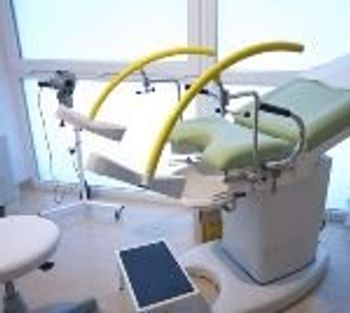
The American College of Physicians (ACP) recommends against pelvic exams in asymptomatic, nonpregnant, adult women. Some say this is faulty logic. What say you?

The American College of Physicians (ACP) recommends against pelvic exams in asymptomatic, nonpregnant, adult women. Some say this is faulty logic. What say you?

The Supreme Court justices insist that their decision for Hobby Lobby is limited and narrow in scope. Find out why gynecologist Deborah Ottenheimer, MD, doesn't buy it.

Treating anemia early with iron replacement therapy can significantly improve quality of life in women with heavy menstrual bleeding, new research finds.

Hobby Lobby doesn’t have to offer contraceptives to their employees. If you’re mad, you’re not alone. Read what Justice Ruth Bader Ginsburg had to say.

What matters most to women and healthcare providers when it comes to contraceptive choices may vary dramatically, according to a recent study in Contraception.

Long-term use of birth control pills has been linked to an increased risk of glaucoma. Do you consider glaucoma risk before prescribing hormonal contraception?

According to a recent study in the Journal of the American Medical Association, the majority of Americans support universal coverage for birth control.

Concerns about asymptomatic sexually transmitted infection (STI) in women at high risk should not delay placement of an intrauterine device (IUD) in women who also are at risk of undesired pregnancy, according to a study by investigators from the University of Pittsburgh. The results, in 366 patients from an inner-city clinic, were presented at the 2014 ACOG Annual Clinical Meeting.

A second-prize paper presented at ACOG 2014 evaluates the risk of uterine perforation for levonorgestrel IUDs and copper IUDs and reports an unexpected finding.

Don’t let time constraints and large patient loads prevent you from providing a thorough well-woman visit. Are you covering all the bases?

Expert Mary Jane Minkin, MD, is quoted in an article in Women’s Health that profiles a study from the Journal of Sexual Medicine.

Marijuana and e-cigarettes can cause harm in more ways than you may think. Do you ask your patients about their marijuana or e-cigarette use? The numbers may surprise you.

Diet can’t cure endometriosis, but dietary recommendations could be part of the treatment. Find out here why choosing certain foods may help reduce symptoms.

A striking number of sexually active women experience reproductive coercion by their male partners, and their ability to use contraception and plan pregnancies may be compromised.

A study scheduled to be presented at the American Academy of Neurology’s 66th annual meeting in April suggests a possible connection between use of hormonal contraception and risk of multiple sclerosis (MS).

Intrauterine devices (IUDs) are an effective form of long-acting reversible contraception (LARC) with low complication rates, yet adolescents are more likely than adult women to request early removal of the devices, according to a new study in Obstetrics and Gynecology.

Navigating the complexities of privacy in the adolescent gyn patient can be tricky. Here, Deborah Ottenheimer, MD, a specialist in adolescent gynecology, shares her protocol for providing confidential medical care to teen patients.



More Ob/Gyns are probably discussing sex with teenage patients than pediatricians, but a new study serves as a good reminder that physicians need to initiate these conversations.

Patients with excessive bleeding need treatment now. First-line options include progestin-only therapies, the Munro regimen, and DMPA and short-course oral MPA.

The levonorgestrel IUD is particularly helpful in patients with abnormal uterine bleeding who require an interval therapy before surgery can be performed, Harvard physicians find.

Among women who choose IUDs or implants and then discontinue use, the most common subsequent contraceptive choice is another long-acting reversible contraceptive.

New research shows low-dose intrauterine contraceptive devices are safe and effective in preventing pregnancy after 3 years, and their use could be expanded among women who have not had children.

Use of depot medroxyprogesterone acetate for 24 months was associated with a significant decrease in bone mineral density compared with nonhormonal contraception.